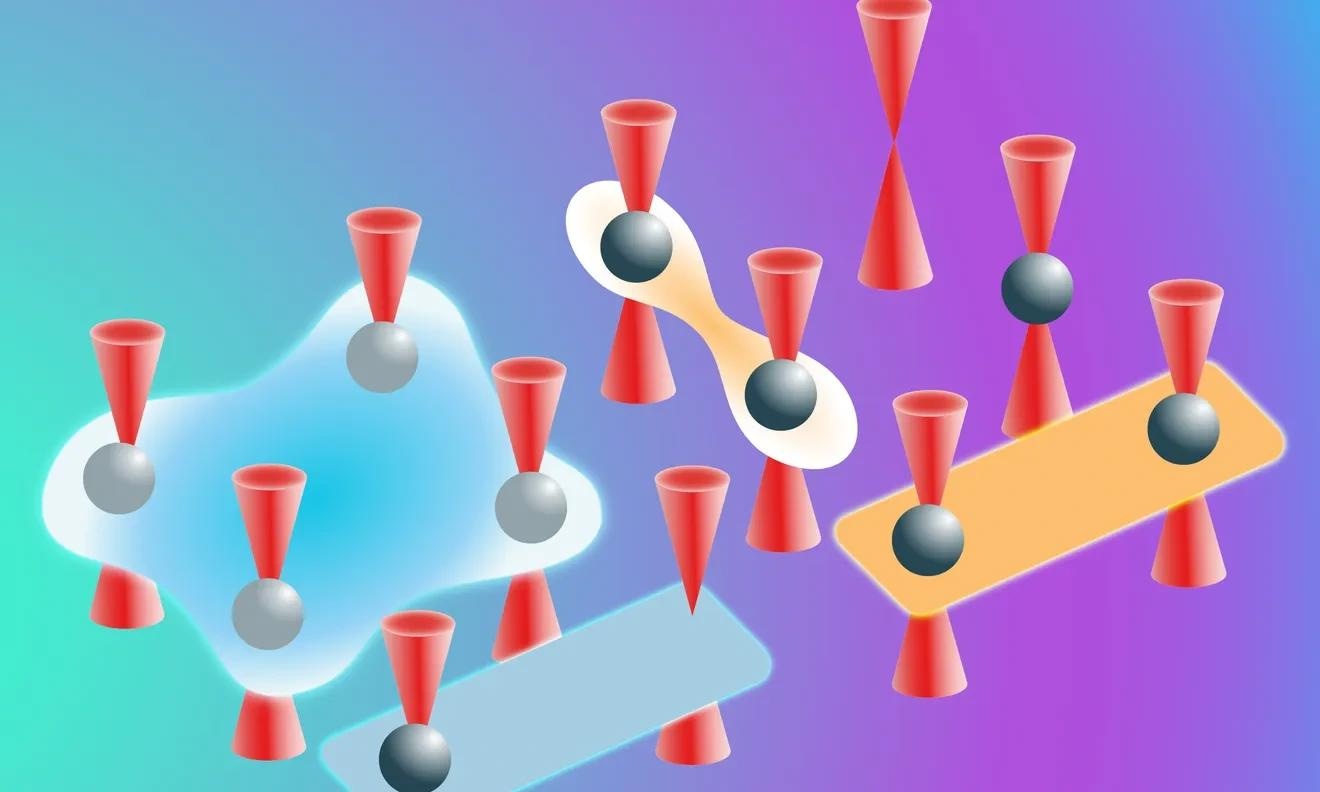A new kind of quantum computer that simulates intricate physical systems by using fermionic atoms has been developed by researchers from Austria and the USA. The processor makes use of programmable neutral atom arrays and has hardware-efficient fermionic gates for modeling fermionic models. The group under the direction of Peter Zoller showed how the new quantum processor is capable of simulating fermionic models from quantum chemistry and particle physics with great accuracy.
 The researchers propose to trap fermionic atoms in an array of optical tweezers. The required set of fermionic quantum gates can be natively implemented in this platform. Image Credit: University of Innsbruck
The researchers propose to trap fermionic atoms in an array of optical tweezers. The required set of fermionic quantum gates can be natively implemented in this platform. Image Credit: University of Innsbruck
Fermionic atoms adhere to the Pauli exclusion principle, preventing more than one of them from being in the same quantum state simultaneously. They are thus perfect for modeling systems where fermionic statistics are critical, such as molecules, superconductors, and quark-gluon plasmas.
In qubit-based quantum computers extra resources need to be dedicated to simulate these properties, usually in the form of additional qubits or longer quantum circuits.
Daniel Gonzalez-Cuadra, Department of Theoretical Physics, University of Innsbruck
Quantum Information in Fermionic Particles
A fermionic quantum processor consists of a fermionic register and a collection of fermionic quantum gates.
Gonzalez-Cuadra added, “The register consists on a set of fermionic modes, which can be either empty or occupied by a single fermion, and these two states form the local unit of quantum information. The state of the system we want to simulate, such as a molecule composed of many electrons, will be in general a superposition of many occupation patterns, which can be directly encoded into this register.”
A fermionic quantum circuit is then used to process this information, simulating, for instance, the evolution of a molecule over time. Any such circuit can be broken down into a series of only two different types of fermionic gates, an interaction gate and a tunneling gate.
The researchers propose to hold and manipulate fermionic atoms with extreme accuracy in an array of optical tweezers, which are highly concentrated laser beams.
Gonzalez-Cuadra further stated, “The required set of fermionic quantum gates can be natively implemented in this platform: tunneling gates can be obtained by controlling the tunneling of an atom between two optical tweezers, while interaction gates are implemented by first exciting the atoms to Rydberg states, carrying a strong dipole moment.”
Quantum Chemistry to Particle Physics
Fermionic quantum processing can be used in many disciplines, such as quantum chemistry and particle physics, to simulate the properties of systems of numerous interacting fermions, such as electrons in a molecule or a material or quarks inside a proton.
The researchers show how their fermionic quantum processor can effectively mimic fermionic models from two fundamental branches of physics—quantum chemistry and lattice gauge theory—that are challenging to solve with conventional computers.
“By using fermions to encode and process quantum information, some properties of the simulated system are intrinsically guaranteed at the hardware level, which would require additional resources in a standard qubit-based quantum computer. I am very excited about the future of the field, and I would like to keep contributing to it by identifying the most promising applications for fermionic quantum processing, and by designing tailored algorithms that can run in near-term devices,” Gonzalez-Cuadra concluded.
The recent findings appear in the Proceedings of the National Academy of Sciences (PNAS). The research was funded by the Austrian Science Fund FWF, the European Union, and the Simons Foundation, among others.
Journal Reference:
Gonzalez-Cuadra, D., et al. (2023) Fermionic quantum processing with programmable neutral atom arrays. Proceedings of the National Academy of Sciences. doi:10.1073/pnas.2304294120